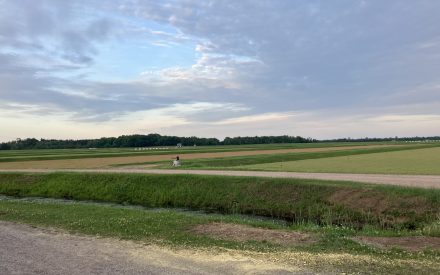Data Source for Community Economic Development

Many Communities and Counties prepare fact sheets, reports, and planning documents with relevant community and economic information. These documents come in a variety of shapes and sizes and utilize diverse data sources. We provide a quick and easy way to locate data sources and provide guidance on how to access, utilize, and apply these data to research questions related to community economic development.
Data Sources
Applied Population Laboratory: APL is a group of research and outreach professionals in the Department of Community and Environmental Sociology at the University of Wisconsin-Madison. Several APL faculty and staff also have appointments with UW-Extension.
Association of Religion Data Archives: Provides free access to quality data on religion using online features for generating national profiles, maps, church membership overviews, denominational heritage trees, tables, charts, and other summary reports. Over 400 data files are available for online preview and most can be downloaded for additional research.
Bureau of Economic Analysis: The Bureau of Economic Analysis (BEA) promotes a better understanding of the U.S. economy by providing the most timely, relevant, and accurate economic accounts data in an objective and cost-effective manner.
- Regional Economic Accounts: The regional economic accounts tell us about the geographic distribution of U.S. economic activity and growth. The estimates of gross domestic product by state and state and local area personal income, and the accompanying detail, provide a consistent framework for analyzing and comparing individual state and local area economies.
Bureau of Labor Statistics: The Bureau of Labor Statistics (BLS) is a Federal government agency and everything that we publish, both in hard copy and electronically, is in the public domain, except for previously copyrighted photographs and illustrations. You are free to use our public domain material without specific permission, although we do ask that you cite the Bureau of Labor Statistics as the source.
Bureau of Transportation Statistics: collects and supplies information about transportation in the United States. Its Statistical Products and Data page may be most helpful.
Census of Agriculture: The Census of Agriculture is a complete count of U.S. farms and ranches and the people who operate them. Even small plots of land – whether rural or urban – growing fruit, vegetables or some food animals count if $1,000 or more of such products were raised and sold, or normally would have been sold, during the Census year. The Census of Agriculture, taken only once every five years, looks at land use and ownership, operator characteristics, production practices, income and expenditures. For America’s farmers and ranchers, the Census of Agriculture is their voice, their future, and their opportunity.
City-Data.Com – A collection and analysis of data from numerous sources to create complete and interesting profiles for most U.S. cities.
Coincident Index (CI): is a monthly composite economic indicator published by the Philadelphia Federal Reserve. It provides a snapshot of economic conditions in each state. An increase in a state’s CI over time indicates an expansion in economic activity the state while a declining CI signals a contraction in the state’s economy. The Coincident Index combines four state-level indicators into a single statistic: non-farm employment, average hours worked in manufacturing, the unemployment rate, and wage and salary disbursements. The data for these indicators are gathered from the Bureau of Labor Statistics (BLS) and the Bureau of Economic Analysis (BEA).
County Health Rankings and Roadmaps: The County Health Rankings & Roadmaps, a program of the University of Wisconsin Population Health Institute, works to improve health outcomes for all and to close the health disparities between those with the most and least opportunities for good health. This work is rooted in a deep belief in health equity, the idea that everyone has a fair and just opportunity to be as healthy as possible, regardless of race, ethnicity, gender, income, location, or any other factor.
EconData: Includes a thousand links to socioeconomic data sources, arranged by subject and provider, to point users to the best regional economic data sources.
Economic Research Service/U.S. Department of Agriculture. ERS provides a simple to use mapping feature to create visual profiles.
E-Stats: is the U.S. Census Bureau’s Internet site devoted exclusively to “Measuring the Electronic Economy.”
Federal Procurement Data System: reports the Federal contracts for goods and services given to business across the nation.
Federal Reserve: The United States Federal Reserve (“The Fed”) publishes data on: Bank assets and liabilities, Dealer financing terms, Exchange rates and international data, Financial accounts, Interest rates, Industrial activity, Bank structure data, Household finance, Money Stock Measures, Business Finance, A Micro Data Reference Manual.
Fuel Economy calculator: The US Department of Energy offers a Fuel Economy calculator that allows users to both see the approximate costs of fueling their current vehicle and compare vehicles based on MPG, car make and model, and how much the user expects to drive in a city versus highway setting.
Headwater Economics: automatically and efficiently produce socioeconomic profiles for any County in the United States (See also: Sonoran Institute below).
Higher Ed Information Center: This website provides higher education policymakers and analysts with data about public investments in higher education. The site allows the user to compare states on both investments and performance over time.
HUD User: A definitive source for research and data that offers an in-depth view of housing in the United States.
Internal Revenue Service (IRS): is a Bureau of the Department of the Treasury that collects and enforces taxes. Through the collection of taxes, the IRS compiles Tax Statistics on individuals, businesses, and charities.
National Association of Realtors: NAR provides housing statistics at a national and regional level. The statistics and data available include: Existing-Home Sales, Pending Home Sales Index, Housing Affordability Index, REALTORS® Affordability Distribution Curve and Score, Metropolitan Median Home Prices and Affordability, County Median Home Prices and Monthly Mortgage Payment, An Interactive Map for State. They also suggest contacting local Realtor boards and associations for local level data.
National Center for Educational Statistics: For a list of the school districts within a county and to explore educational finance statistics by school district.
National Retail Federation is the world’s largest retail trade association, encompassing retailers in 45 different countries in addition to U.S. retailers. Retailers include all industries and sizes. Their research is conducted in-house. NRF’s Insights and Trends and Retail Resources and Tools pages are likely the most helpful.
Quarterly Census of Employment and Wages (QCEW): is a national quarterly report on employment assembled by the BLS. The QCEW is gathered through the quarterly tax reports completed by employers and includes both full and part-time employees. Statistics are collected during the pay period that includes the 12th of the month. If an employee is paid at any point during that period, he or she is included in the survey results as employed. Since the report is filed by the corporation, a person employed at multiple establishments will likely be counted twice. Reports are published quarterly and annually at the national, state, metropolitan statistical areas (as defined by the Office of Management and Budget) and county levels. It is further classified as Federal Government, State Government, Local Government or the Private Sector Industries.
Self-Sufficiency Standard: measures the level of income needed to meet a family’s basic needs without public or private assistance. It includes the minimum necessities but does not include longer-term needs such as college or retirement savings or short-term “luxuries” like dining out or holiday gifts. It is also separated by state. The goal of making the Standard as standardized and accurate as possible, yet varied geographically and by age, requires meeting several different criteria. As much as possible, the figures are collected or calculated using standardized or equivalent methodology, come from scholarly or credible sources such as the U.S. Bureau of the Census, are updated at least annually, and are age-and/or geographically-specific (where appropriate).
Social Explorer: Provides demographic information in an easily understood format: data maps. They have created hundreds of interactive data maps of the United States. The beta version is supported by the National Science Foundation and New York Times. The beta version is focused on New York, but data for other areas are available in the “map” section. Data is initially presented only at the County level, but you can map data at the census block level by using the area report tool. This tool provides easy access to demographic information about the United States.
State of the Cities Database (SOCDS): HUD provides the following data on this page: Demographic and Economic Population Characteristics via Census and ACS, Unemployment, Jobs, Business Establishments, and Average Pay since the 1990s, Violent and Property Crime Rates collected by the FBI, Local Building Permits, City and Suburban Government Finances, Principal Cities, State of the Cities Data Systems: HMDA Data.
STATS America: is an easy to use resource for a wide variety of data from many different sources (i.e. U.S. Census, Bureau of Economic Analysis, and Bureau of Labor Statistics). Data profiles on population, housing, income and labor are easily accessible at the state, county, and metro levels. Not only does STATS America compile data from many public and private sources, they also include the original source of the data on every table, profile and map. That is a very important addition that is not so conscientiously provided by many other sites.
State of the Cities Database (SOCDS): HUD provides data on Building Permits, FBI crime rates, housing affordability, and other demographic data.
Travel Wisconsin: The Wisconsin Department of Tourism prepares the economic impact of tourism by county data.
US Census Data: Data.census.gov is the new platform to access data and digital content from the U.S. Census Bureau. The vision for data dissemination through data.census.gov is to improve the customer experience by making data available from one centralized place so that data users spend less time searching for data content and more time using it.
US Department of Energy: is a source for information on crude energy sources imported and exported, energy production in the US, and energy levels that are being used by consumers.
US Energy Information Administration: reports on the energy used in the U.S. The reports include information on crude energy sources imported and exported, energy production in the US, and energy levels that are being used by consumers.
Wisconsin Department of Public Instruction: Successful school communities use data to help all students meet and exceed expectations. Data on this system is available by school district and can be helpful in identifying areas of excellence, areas of need, alternative explanations for issues/problems, and possible strategies for improvement.
Wisconsin Department of Workforce Development: WisConomy is a source of Wisconsin economic and labor market information. Based on the most up-to-date techniques of tabular and graphical presentation, the monthly County Snapshot provides an at-a-glance picture of the most recent changes in the local economies of Wisconsin.
Wisconsin Office of Rural Health: This page helps users to define “Rural” and also gives data, reports, maps, and other resources about rural health and healthcare in Wisconsin.
World Mapper: is a unique mapping tool that rescales the world map based upon a wide variety of criteria (i.e population, education, wealth, health, internet use). Unlike traditional maps that are scaled based on land area, World Mapper re-sizes each country based on the criteria chosen by the user. The result is maps that dramatically highlight demographic, social, and cultural differences among countries and regions.
















